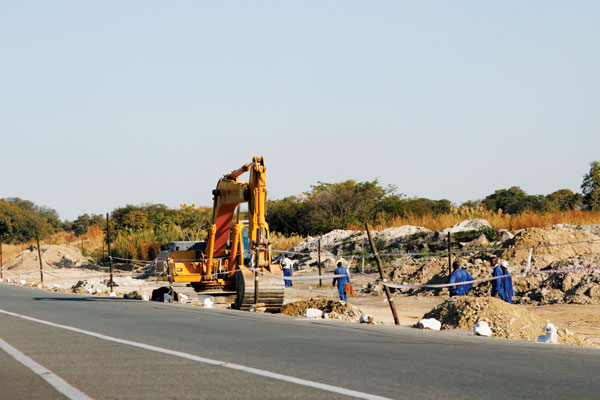
BY TONDERAYI MATONHO
With biting fuel shortages being experienced in Zimbabwe these days, transport challenges have also become acute, exposing the ordinary commuter to prohibitive transport costs coupled with compounding issues of belonging to a country with some of the most poorly endowed infrastructure in terms of unreliable road and water networks.
Why all these prohibitive costs? The transporter needs to buy fuel at over ZWR$3 per litre, pay tollgate fees, or an occasional bribe to the traffic police.
Transporting people and goods in a developing country like Zimbabwe has often been likened to a competitive and obstacle race.
Furthermore, the commuter is not only faced with these difficulties, but also poor safety standards, all colluding to disrupt free movement of people.
Experts note that a country’s infrastructure and its transport system in particular, is often seen as critical aspects of its national development.
A principal officer at the Infrastructure Development Bank of Zimbabwe, Sylvia Shekede, said: “Railways, roads and airports are literally the gateways that a country needs for exchange, communication and tourism, for its economic growth and development and for people to have access to basic goods and services.”
Bankers Association of Zimbabwe chief economist, Dephine Mazambani, also explained: “An efficient and well-maintained infrastructure is critical in sustaining an economy and a key component of the investment climate as it reduces costs of doing business by enabling people to access markets and allows the easy flow of people and movement of goods.”
- Chamisa under fire over US$120K donation
- Mavhunga puts DeMbare into Chibuku quarterfinals
- Pension funds bet on Cabora Bassa oilfields
- Councils defy govt fire tender directive
Keep Reading
In 2008, the World Bank acknowledged that a 10% increase in infrastructure development contributed 1% in the long term. In Sub-Saharan Africa, infrastructure development has contributed about half of the recent acceleration in growth.
Between 1990 and 2005, China invested approximately US$600 billion upgrading its road system connecting all of its larger cities. Such infrastructure investments are some of the leading contributory factors to China becoming the largest economy in terms of the purchasing power parity.
“Poor or no efficient infrastructure is a drawback, especially in Africa when it comes to economic growth and poverty is the order of the day,” Mazambani said, adding that it was vital for developing countries to come up with infrastructural financing options which will enable short and long term growth in such economies.
“Zimbabwe’s infrastructure was once ranked among the best in Africa, however, this is now a mirage from the past and the infrastructure is now dilapidated,” she said.
According to the 2016-2018 Interim Poverty Reduction Strategy Paper: “The Zimbabwean economy has poor infrastructure which has become one of the major impediments to economic development.
“The increasingly dilapidated roads and rail network, information and communication technology, water and sanitation and energy sectors have resulted in investors shunning the country.”
The 2017-2018 Global Competitiveness Report ranked Zimbabwe’s infrastructure development at number 123 out of 138 countries, indicating how far the country’s infrastructure has deteriorated.
“There is need for policymakers to come up with noble infrastructure financing options that will assist the economy to develop because other countries in Africa are doing well, notably Rwanda, Botswana, and South Africa,” Mazambani said.
Another development economist, Masimba John Manyanya, based in Goromonzi West, asserted: “Trade and commerce is the motor of economic growth, and it can only flourish when it can rely upon transport systems that perform well; only then will farmers be able to ship their goods to the market.
“A major obstacle to the development of the African continent is the parlous state of the transport infrastructure. A significant proportion of the investments made in road networks and efficient air transport in the 1960s and 1970’s has disappeared, due to lack of maintenance.”
The World Bank estimates that the ‘saving’ of one dollar on road maintenance increases the cost of operating vehicles on that route by two to three dollars. The poor state of roads, thus slows down the development of supply systems and food distribution, and it is the users and consumers who suffer, and pay the consequences.
According to World Bank studies, in 85 countries, about one quarter of rural tarmacked roads need reconstruction, as well as one third of non-paved roads. On top of the dilapidated state of the roads, and the deterioration of rural tracks, there is another layer of concern: The human dimension of road system management.
Public services fiddle papers around in agonising detail, there are tedious road checks and “flying” quads of law-enforcement agents with their associated costs; they all add to the inconvenience and expense of road transport. On the roads between urban residential areas and the city centre, in Zimbabwe, for example, in more recent times, traffic jams caused mainly by endless fuel queues and ramshackle kombis and buses, hurtle at excess speed from pothole to pothole, overloaded with human and other cargo, are sometimes a fatal recipe for disaster.
Mazambani said: “Private Public Partnerships (PPPs) have already been explored and there is need to increase and expedite this initiative of infrastructure financing.
“PPPs are contractual arrangements in which governments form partnerships with the private sector to design, finance, build and maintain infrastructure such as transport, roads, water supply facilities and waste water treatment plants”.
She further pointed out that, for instance, the construction of the Gwayi-Tshangani Dam or Tugwi-Mukosi in Matabeleland North and Masvingo South respectively, required PPP infrastructure finance to provide irrigation to boost agriculture during times of uneven rainfall patterns.
Such transfer patterns of management tasks has many advantages, according to the World Bank. They include improved productivity and quality in service, lower costs for users and reduced deficits for public bodies. These are the first benefits, among many which — according to current thinking, privatisation holds in store for the African transport, road and water sectors.











